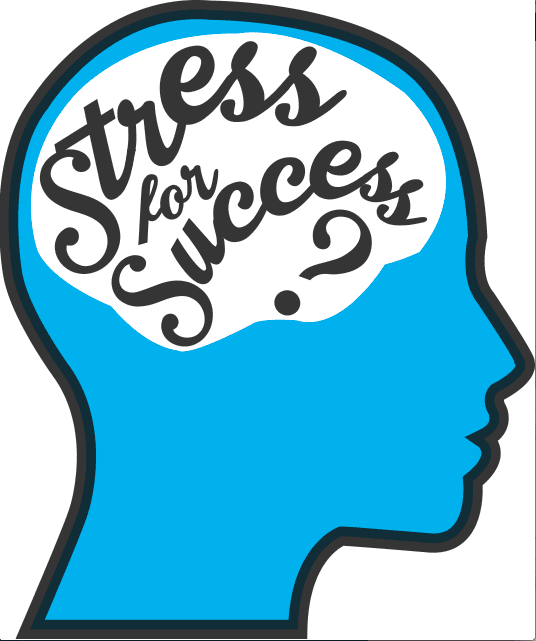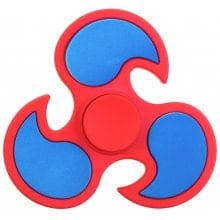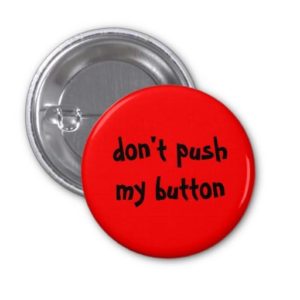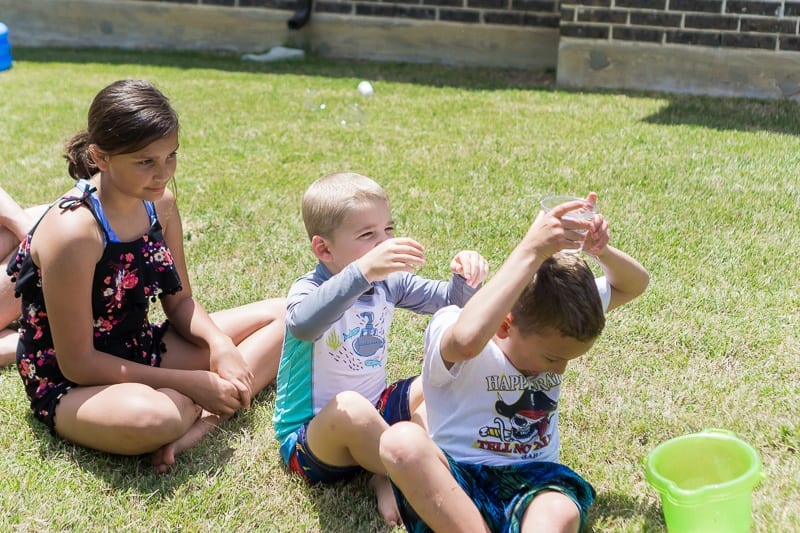Stress today is prevalent and finding some ways to help combat it, is essential. There is a lot of information available that can be workshopped for a group to get a better understanding of stress, and how to successfully manage it. Our philosophy at WorkRFun is around interactive learning, so we always recommend using activities as a teaching methodology, together with a debriefing session at the conclusion of the activity. There are many activities designed to address stress available, here are some which I believe are enjoyable and well received.
Straw Activity

How to Play
Get yourself some straws, as a demonstration place one straw onto a table horizontally. Take hold of both the ends of the straw and twist the ends so that they start to overlap and an air bubble forms in the middle. Have a volunteer come up and pop the straw bubble, using their thumb and pointing finger or middle finger. The created straw bubble will break and may make some noise.
Reflection Tips and Strategies
This activity is a great way to explain how stress affects us. We tend to bottle up our anxiety and stress, which many consider is just part of everyday living. Eventually, over time we can become sensitive to everything and the slightest things can set us off, or ‘burst our bubble’. The best way to deal with stress is to identify what triggers these outbursts. Recognize the cause in order to move forward.
Start talking!
When discussing the issue of stress, start off by using a survey or questionnaire that everybody can fill out. This survey can then be used as a focal point to start up a conversation on the subject.
 Stress for Success
Stress for Success

How to play
You can form groups of 5 to 8 players, or if there is only one group then you, as the facilitator can join in. If there are more groups, you should not join a group, as you have to walk around and keep an eye on all groups.
Once the groups have come together, have them form a circle and hand out one stress ball to each group. The first player who has the ball must begin by throwing it to another member of the group in the circle. This person then throws it to another member and so on, never the same person twice until everyone has had a turn. Players must remember who they threw the ball to first, as this is the pattern they will be following.
So, when the ball is thrown to the last person in the group, they will then throw it to the first person again, who then throws it to the same person as before. Try to get the group to throw the ball a little faster the second time around. Once everyone understands the throw pattern, increase the challenge by adding another ball.
Continue adding another ball, the group could reach 5 to 6 balls active in the circle. During the activity, balls will fall to the floor, no worries, just encourage players to pick them up and continue with the game. You can imagine the concentration, but also the fun and laughter as everyone tries to keep up.
Reflective tips and strategies
After a few minutes playing the game, have the groups sit down and ask a few questions, such as:
- What did you learn from playing the game ‘Stress for Success’?
- Was there a plan or strategy required for success?
- Were you focused on the task at hand, or were your thoughts on other things like what’s for lunch?
This whole activity is a good way to introduce mindfulness and how you should be completely present in a moment. The activity can, therefore, be very useful in group therapy situations, especially for those focusing on the subject.
You can use the activity as a reflection of real life, many if not all of us have hectic schedules and we try to juggle as many things as possible. You will find out, as in the game, that if you lose your focus or make a half-hearted attempt, you will drop the ball both literally and figuratively. We can also feel overwhelmed with thoughts and things coming towards us, just like the balls being thrown at you.
The stress balls are easily obtained, there are many stores you can visit, which will have them. You can also search online for a store that sells them, just google ‘Stress Balls’. The typical stress ball is usually light and cannot cause injury.
Thumball – Stress Management
The Thumball is a fun and interactive way to start conversations about various topics. In this case, the topic will be stress, its causes and how to deal with it. There are actually Thumballs available at various stores, but it is easy to make your own. All you would need is a 6-inch soccer type ball, you know the ones sewn together with hexagonal panels. Take a felt tip pen and write your own prompts or questions on each panel of the ball.
Have the group stand in a circle and start by throwing the ball to a member who will catch it. Wherever their thumbs land on the ball, there should be a question or prompt they must answer. Continue throwing the ball, each person looking under their thumb for the prompt and answering the question.
Thoughts, Stress, and Consequences

Your thoughts play a powerful role in how you handle and view your stress. In most cases the stress is all in the mind, you come up with all kinds of scenarios, that haven’t even happened. For example, you have a proposal to discuss at the office, and it’s in front of people you don’t know. Your mind might come up with all kinds of negative thoughts, how your audience might react, or is your proposal good enough amongst other things. You haven’t even started, and you are already stressed out, for something that hasn’t even happened, it’s only in your mind. Have a look at this next activity, which might help you to understand the process:
When discussing stress with a group, ask them to think about something that usually stresses them out. Have them imagine the different consequences and reactions that may occur. Allow the group to do this for about 5 minutes.
To deepen the experience, you can do the following:
- While the group is thinking, out of the blue, call out, ‘Stop Thinking”
- Ask the group how they are feeling
- Then ask whether any of their thoughts have come true
This demonstrates how stress can, in most cases, only be in the mind. The more you focus on the negative thoughts, the more stress you will create. The key is to be aware of your thoughts and the consequences thereof. When a negative thought enters your mind, acknowledge it and tell yourself that has not happened yet.
Breathing Exercises

We don’t realize, that when we stress, we start to take more shallow breaths. The simple act of breathing deeply can help reduce stress levels. There are many examples and video’s demonstrating some techniques. The simplest technique, is the 5-2-8 breathing technique, breathing in through your nose for 5 counts, holding for 2 counts and exhaling through your nose for 8 counts.
Taking your Stress Temperature

This is a simple way to measure the stress levels of your group. All you will need to do is draw a picture of a thermometer on a flip chart. When you begin your programme or workshop, start off with asking your group what their stress levels are. They will then need to place a red colored sticky dot onto the thermometer.
Written on the picture of the thermometer at the top can be, ‘Ready to explode’ and at the bottom ‘Calm and Relaxed’. When the workshop is finished, again ask the group to place a sticker where they see fit, onto the thermometer. This sticker can be green, and you will notice how many place their stickers further down on the thermometer, much more relaxed than when they started.
There are many techniques and ways to manage stress simply, but when we are in the middle of a stressful moment, we tend to forget what we can do to help. The best way to tackle this is to prepare and practice stress management techniques, ensuring they will harness these techniques when necessary.
Working Together

This activity is great to use with groups that are already familiar with each other. If you are providing a workshop or programme, use this exercise about halfway through, a good idea would be after lunch.
Assemble the group together and hand out a piece of paper to each member. Have everyone write their names on top of their paper and then add these discussion questions.
- When I’m stressed, I need my co-workers to do the following… {fill your answer in}
- When I’m stressed, what my co-workers should NOT do… {fill your answer in}
All the answers and information is compared and can be copied to hand out to everyone, these can then be used if needed in the future.
This exercise brings in an appreciation and understanding of others needs. Groups become aware that everyone has different needs, nobody is the same and never assume such things.
Assuming Control – Your Body and Stress
Flipcharts come in fairly handy at all types of workshops or programmes. In this instance, draw the shape of a human body onto a page of the flipchart. Now, take different colored pens and mark off where you think stress affects the body most. These areas could include the neck and shoulders, stomach, and chest.
Allow everyone to do the same, this helps people see where their stress lies and how this affects their bodies. You can then discuss what helps to reduce stress, what does everyone do to bring down their stress levels. Discuss how you can bring all of these stress-reducing ideas and techniques into your life, making it habit, thus minimizing the effects of stress.
Stress Wheel

Another method whereby you can measure a person’s stress levels is by using the ‘Stress Wheel’. Provide a blank template of a ‘wheel’, and hand it out to your group. Ask the group what causes them the most stress. Some examples include work, relationships, and finances. Have participants choose about six areas of concern, then rate them from 0 to 10. The 0 is no stress and the ten representing the most stress.
Individuals will then write down their six concerns and rate them on the ‘wheel’. You can then ask the group to share their ‘Wheel’ with the person next to them. During the programme, you can then come up with techniques and ways to deal with the stress issues written on the wheel chart.
Visualize Activity
Have your group write down everything that makes them angry. Then, have them right next to these anger triggers, what their reactions are. Next to this, have them write down what they should do, or what they would like to do instead.
You can add in a discussion about their reactions and what they would like to do, with everyone or with a partner. Otherwise, continue and have groups visualize their anger moments and then have them replace their normal reactions with actions they would like to do instead. Let groups practice this visualization technique for a few minutes.
For example, when driving a car and somebody pulls in front of you. Some reactions would be to yell and get upset at the offending driver. Visualize and replace this reaction with another reaction, for example, laughing.
Balloons Stress Activity

All you need for this activity is a drawing pin and a large balloon. Inform the group at the beginning of the workshop or programme, that you are going to pop the balloon, but nobody will know when this is going to happen. Once you pop the balloon unannounced, ask the group how they feel.
You can then delve into a discussion on various anxiety issues, which can build up even before a person realizes they are stressed. Another way to use balloons is to get individuals to imagine their stress and then to blow it out into a balloon. Then, have them pop their balloons or go outside and release the balloon. This technique is a great way to help those with stress, take control back. They can also draw images onto the balloon, which represents their feelings and then do the same with the balloon as above.
Don’t Push My Button

This activity involves some arts and crafts, where participants create their ‘buttons’ from various craft or other available materials. You’ve heard of the term, “don’t push my buttons”? Here’s your chance to make your own.
Once everyone has made up their buttons, they must wear them and when you talk to somebody, explain what your button represents. This is a creative way to share with others, what bothers us on a day to day basis.
Trigger Points
Hand out some paper and pens, then ask the group to list their three worst stress areas. Tell them not to write their names on the paper and then to hand them in. Shuffle all the papers and hand them out again to the group. Let each member then read off their anonymous list and share with the group how they would deal with those issues.
Passing the Cup of Water

How to Play
Tell the group to form a circle while standing, take a cup that has been filled halfway, and instruct the group to pass it around the circle. The cup can be passed either clockwise or ant-clockwise. Once the first cup is going around, add in another one and then another one.
Increase the challenge by taking some of the cups out and exchanging them with cups that have more water in them. You can also ask a few members of the group to remove themselves from the circle, which will make the circle smaller. Eventually, the members will be trying to keep from spilling their cups while passing it around, even having two cups at a time. They must continue to pass the cups around as fast as possible until you call “Stop.”
Reflections Tips and Strategies
After completing the challenge, have the group discuss their experience. You can use a few simple questions to get things moving:
- How did they feel about the other members of the group?
- What were your feelings when you were passing the cup of water around?
- Did you feel anything when asked to step out of the circle?
- Were you stressed when the circle became smaller?
The activity is safe and simple to do, but what is it that makes us afraid of spilling the water? Those who have been asked to leave the circle may make assumptions like they are not allowed to return and help, even when there was no rule against this. All of these actions make for a powerful discussion.



